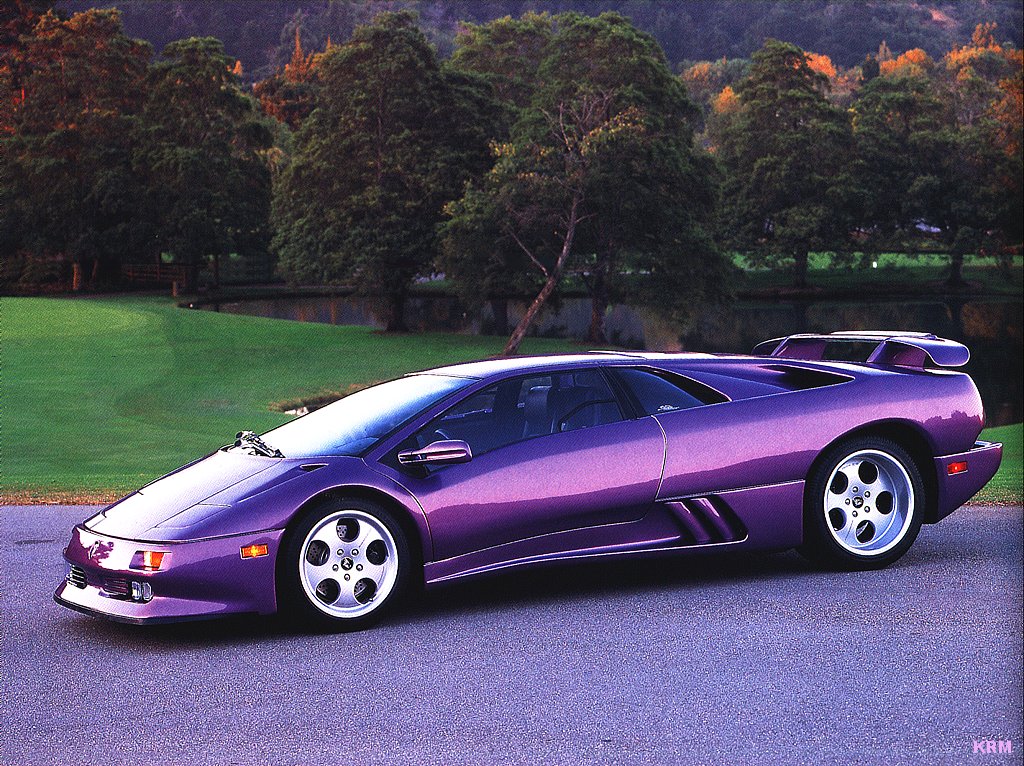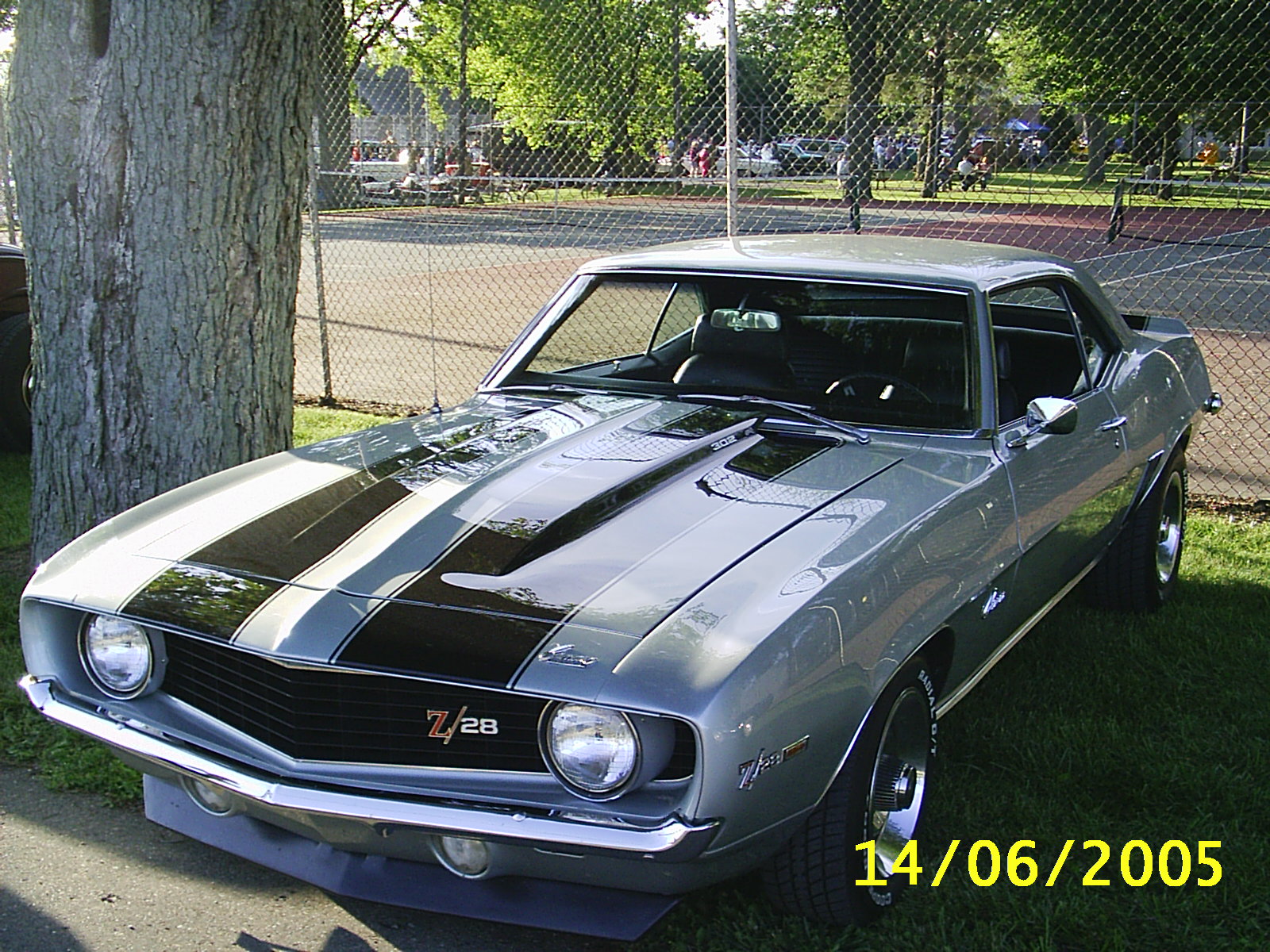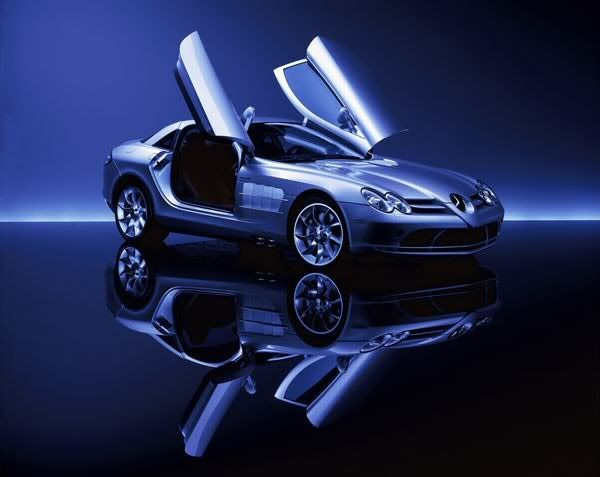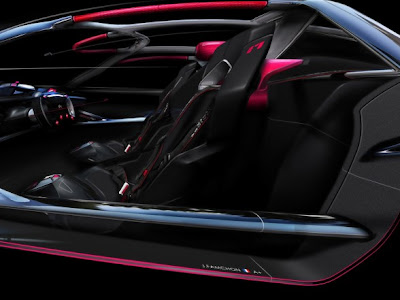The Lamborghini Diablo was a high-performance mid-engined sports car built by Italian automaker Lamborghini between 1990 and 2001. It was the first Lamborghini capable of attaining a top speed in excess of 200 miles per hour (320 km/h). After the end of its production run in 2001, the Diablo was replaced by the Lamborghini Murciélago.
Development
At a time when the company was financed by the Swiss-based Mimram brothers, Lamborghini began development of what was codenamed Project 132 in June 1985 as a replacement for the Countach model. The brief stated that its top speed had to be at least 315 km/h.
The design of the car was contracted to Marcello Gandini, who had designed its two predecessors. When Chrysler bought the company in 1987, providing money to complete its development, its management was unimpressed with Gandini’s designs and commissioned its design team in Detroit to execute a third extensive redesign, smoothing out the trademark sharp edges and corners of Gandini's original design, and leaving him famously unimpressed.
Saturday, April 3, 2010
Lamborghini Reventon Best images
The Lamborghini Reventón (Spanish pronunciation:is a mid-engined sports car that debuted at the 2007 Frankfurt Motor Show. It ranks as one of the most powerful and expensive Lamborghini road cars to date, costing one million euros (US$1.5 million, or £858,000). The official press release stated that only 20 vehicles would be released to the public, with one additional car (marked as 0/20) produced for the Lamborghini Museum.[3] Although early rumours indicated the total number would actually be 100, each Reventón is clearly stamped with its number in the sequence of 20 between the driver's and passenger's seats.
 lamborghini reventon
lamborghini reventon
 lamborghini reventon
lamborghini reventon
 lamborghini reventon
lamborghini reventon
 lamborghini reventon
lamborghini reventon lamborghini reventon
lamborghini reventon lamborghini reventon
lamborghini reventon
Labels:
Lamborghini
2 Muscle Cars
Muscle car is a term used to refer to a variety of high performance automobiles.At its most widely accepted the term refers to American 2-door rear wheel drive mid-size cars of the late 1960s and early 1970s equipped with large, powerful V8s and sold at an affordable price for street use and drag racing, formally and informally.
As such, they are distinct from two-seat sports cars and expensive 2+2 GTs intended for high-speed touring and road racing.
Building on the American phenomenon and developing simultaneously in their own markets, muscle cars also emerged in their own fashions in Australia, South Africa, the UK and elsewhere.
As such, they are distinct from two-seat sports cars and expensive 2+2 GTs intended for high-speed touring and road racing.
Building on the American phenomenon and developing simultaneously in their own markets, muscle cars also emerged in their own fashions in Australia, South Africa, the UK and elsewhere.
Dodge Viper 3 best cars
The Dodge Viper is a V10-powered sports car manufactured by the Dodge division of Chrysler. Production of the two seat sports car began at New Mack Assembly in 1992 and moved to its current home at Conner Avenue Assembly in October 1995. The car, as well as numerous variations of it, has made countless appearances in TV shows, video games, movies, and music videos.
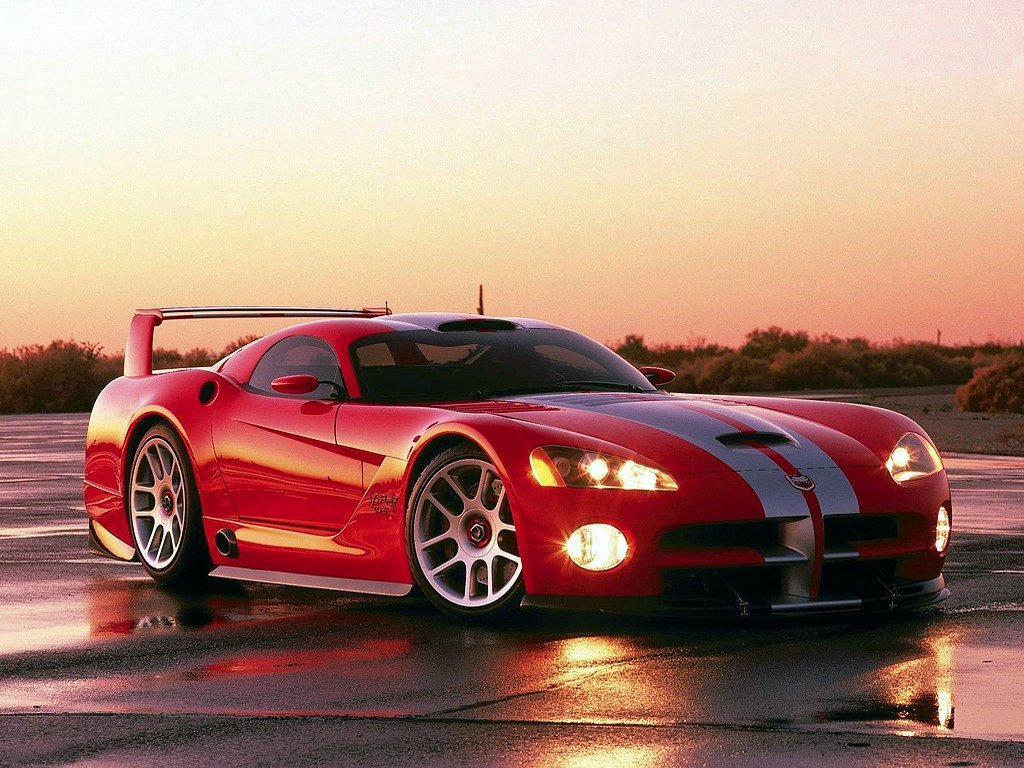 Dodge Viper
Dodge Viper
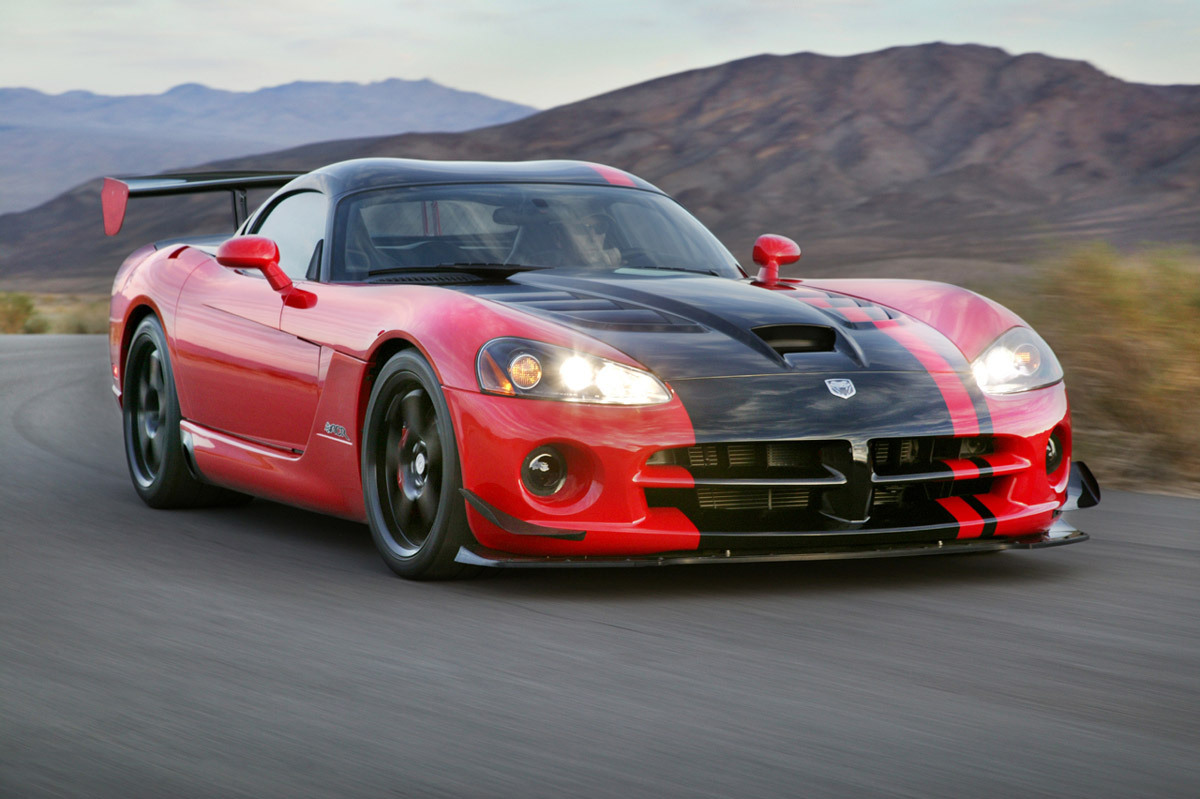 Dodge Viper
Dodge Viper
 Dodge Viper
Dodge Viper
Development
The Viper was conceived as a historical take on the classic American sports car. The iconic AC Cobra was a source of inspiration, and the final version of the Viper bears this out with its powerful engine, minimalist straightforward design, muscular and aggressive styling, and high performance. Some saw claims to kinship with the Cobra as a marketing exercise, ignoring that Carroll Shelby was heavily involved in the initial design of the Viper, and subsequent design of the Viper GTS coupe. Notably, the later (1996 through 2002) Viper GTS coupe took a few design cues from the Pete Brock designed Shelby Cobra Daytona. Though the proportions seem similar at first glance, the designs are quite unique. Carroll Shelby was key in the development of the RT/10 as well as having a hand in the development of the GTS model.
 Dodge Viper
Dodge Viper Dodge Viper
Dodge Viper Dodge Viper
Dodge ViperDevelopment
The Viper was conceived as a historical take on the classic American sports car. The iconic AC Cobra was a source of inspiration, and the final version of the Viper bears this out with its powerful engine, minimalist straightforward design, muscular and aggressive styling, and high performance. Some saw claims to kinship with the Cobra as a marketing exercise, ignoring that Carroll Shelby was heavily involved in the initial design of the Viper, and subsequent design of the Viper GTS coupe. Notably, the later (1996 through 2002) Viper GTS coupe took a few design cues from the Pete Brock designed Shelby Cobra Daytona. Though the proportions seem similar at first glance, the designs are quite unique. Carroll Shelby was key in the development of the RT/10 as well as having a hand in the development of the GTS model.
2 Best Bentley cars
Bentley Motors Limited is a British manufacturer of automobiles founded on 18 January 1919 by Walter Owen Bentley (known as W.O. Bentley or just "W.O."). Bentley had been previously known for his range of rotary aero-engines in World War I, the most famous being the Bentley BR1 as used in later versions of the Sopwith Camel. Since 1998, the company has been owned by the Volkswagen Group of Germany.
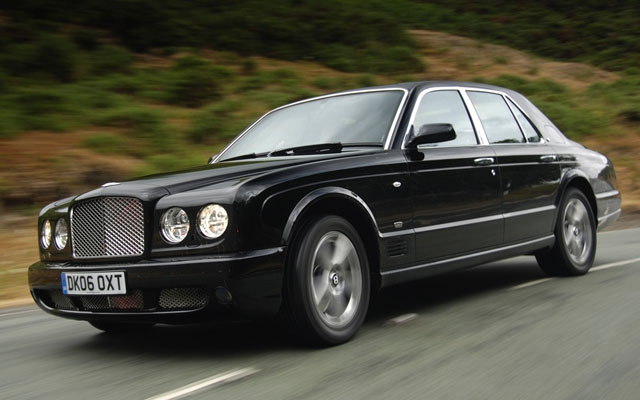 Bentley
Bentley
 Bentley
Bentley
 Bentley
Bentley Bentley
Bentley
3 Bugatti Veyron
The Bugatti Veyron EB 16.4 is the most recent version of a mid-engined full-sized grand tourer developed by the German car-manufacturer Volkswagen and produced by the Volkswagen-brand Bugatti Automobiles SAS at their headquarters in Château St. Jean in Molsheim (Alsace, France), and whose production and development is often credited to Ferdinand Karl Piech. It is named after French racing driver Pierre Veyron, who won the 24 hours of Le Mans in 1939 while racing for the original Bugatti company. It was named "Car Of The Decade" by the BBC television programme Top Gear.
 Bugatti Veyron
Bugatti Veyron
 Bugatti Veyron
Bugatti Veyron
 Bugatti Veyron
Bugatti Veyron
Sang Noir
The Sang Noir pays homage to the original Bugatti Atlantique 57S of the 1930s. Exterior styling combines an all-black colour palette — Sang Noir means "black blood" — with raw carbon fibre panels, blacked-out headlamps, and aluminium trim for the grille surround and side mirrors. The production run was 15 vehicles. The interior is exclusively finished in bright orange.
Grand Sport
Bugatti announced the production of a targa top version, called Grand Sport. The car was unveiled at Pebble Beach Concours d'Eleganceon 15 August 2008, with production that began in spring 2009. The Grand Sport comes with small tweaks to the windshield and running lights, and two removable tops. The second is a temporary roof fashioned after an umbrella and inspired by pictures of classic Bugatti racers with umbrellas in hand. The Grand Sport can reach 406 km/h with the hardtop in place, the same top speed as the coupé version. With no roof, the top speed is limited to 369 km/h, and to 130 km/h with the temporary soft roof. The Grand Sport has extensive reinforcement beyond the standard Veyron, including carbon fibre doors, hoops, intake faces; carbon fibre enclosed transmission tunnel.
The first Grand Sport (code named: Chassis 001) was sold at the 2008 Gooding & Company Pebble Beach Auction with a winning bid price of $2.9 million. Approximately $900,000 of the auction price went to charity. it costs £1,000,000
Bleu Centenaire
This version was a new edition created to celebrate the 100th anniversary of the Bugatti brand. The entire body was painted blue, rather than the standard two-tone scheme. Instead, a combination of matte and gloss "Bugatti Blue" paint was used.[10] The mid-section between the two wings on the hood was expanded, and a chrome strip up the middle was added. The car is also more expensive than the standard Veyron, costing in excess of £1,000,000.
The car was unveiled at the 2009 Geneva Motor Show.
Mansory Linea Vincerò
German car tuner, Mansory, decided to tune up the Bugatti Veyron 16.4. What was born was the Vincerò, meaning 'I will win' in Italian. The front part gets a comprehensive face-lift including modified wings, a shorter hood and a striking front apron. The LED daytime running lights integrated in the front mount and the implemented stylised “V” as a special tribute to the name “Vincerò” draw even more attention to the car. The newly developed side skirts are the visual and aerodynamic connection between the axles. Larger air outlets at the sides and at the back render optimal engine cooling and in combination with the new diffuser, they underline the powerful car design. Mansory transforms the car using an ultra light and high strength carbon giving it a light look (and drive). The car costs about a million above that of the stock Bugatti.
Grand Sport Sang Bleu
Bugatti unveiled the Veyron Grand Sport Sang Bleu, an exclusive, one off Grand Sport, honoring the marques precious heritage. Instead of applying two paint colours or paint and material to highlight the two tone design the Bugatti Veyron Grand Sport Sang Bleu exclusively concentrates on materials, particularly carbon fibre and aluminium.
The Pebble Beach car is blue carbon fibre with polished aluminium. The visual carbon fibre is tinted in royal blue to emphasize the refined volumes and surfaces of the Bugatti Veyron Grand Sport. The rear airscoops are tinted in the same nightblue to fluidly integrate into the overall design philosophy of this unique model.
The rims are inspired by the Grand Sport Roadster and are highlighted in a Midnight Blue and Diamond Cut two tone finish. The interior is trimmed in a newly developed Gaucho leather, which blends with exterior materials to better create a harmonious overall appearance.
 Bugatti Veyron
Bugatti Veyron Bugatti Veyron
Bugatti Veyron Bugatti Veyron
Bugatti VeyronSang Noir
The Sang Noir pays homage to the original Bugatti Atlantique 57S of the 1930s. Exterior styling combines an all-black colour palette — Sang Noir means "black blood" — with raw carbon fibre panels, blacked-out headlamps, and aluminium trim for the grille surround and side mirrors. The production run was 15 vehicles. The interior is exclusively finished in bright orange.
Grand Sport
Bugatti announced the production of a targa top version, called Grand Sport. The car was unveiled at Pebble Beach Concours d'Eleganceon 15 August 2008, with production that began in spring 2009. The Grand Sport comes with small tweaks to the windshield and running lights, and two removable tops. The second is a temporary roof fashioned after an umbrella and inspired by pictures of classic Bugatti racers with umbrellas in hand. The Grand Sport can reach 406 km/h with the hardtop in place, the same top speed as the coupé version. With no roof, the top speed is limited to 369 km/h, and to 130 km/h with the temporary soft roof. The Grand Sport has extensive reinforcement beyond the standard Veyron, including carbon fibre doors, hoops, intake faces; carbon fibre enclosed transmission tunnel.
The first Grand Sport (code named: Chassis 001) was sold at the 2008 Gooding & Company Pebble Beach Auction with a winning bid price of $2.9 million. Approximately $900,000 of the auction price went to charity. it costs £1,000,000
Bleu Centenaire
This version was a new edition created to celebrate the 100th anniversary of the Bugatti brand. The entire body was painted blue, rather than the standard two-tone scheme. Instead, a combination of matte and gloss "Bugatti Blue" paint was used.[10] The mid-section between the two wings on the hood was expanded, and a chrome strip up the middle was added. The car is also more expensive than the standard Veyron, costing in excess of £1,000,000.
The car was unveiled at the 2009 Geneva Motor Show.
Mansory Linea Vincerò
German car tuner, Mansory, decided to tune up the Bugatti Veyron 16.4. What was born was the Vincerò, meaning 'I will win' in Italian. The front part gets a comprehensive face-lift including modified wings, a shorter hood and a striking front apron. The LED daytime running lights integrated in the front mount and the implemented stylised “V” as a special tribute to the name “Vincerò” draw even more attention to the car. The newly developed side skirts are the visual and aerodynamic connection between the axles. Larger air outlets at the sides and at the back render optimal engine cooling and in combination with the new diffuser, they underline the powerful car design. Mansory transforms the car using an ultra light and high strength carbon giving it a light look (and drive). The car costs about a million above that of the stock Bugatti.
Grand Sport Sang Bleu
Bugatti unveiled the Veyron Grand Sport Sang Bleu, an exclusive, one off Grand Sport, honoring the marques precious heritage. Instead of applying two paint colours or paint and material to highlight the two tone design the Bugatti Veyron Grand Sport Sang Bleu exclusively concentrates on materials, particularly carbon fibre and aluminium.
The Pebble Beach car is blue carbon fibre with polished aluminium. The visual carbon fibre is tinted in royal blue to emphasize the refined volumes and surfaces of the Bugatti Veyron Grand Sport. The rear airscoops are tinted in the same nightblue to fluidly integrate into the overall design philosophy of this unique model.
The rims are inspired by the Grand Sport Roadster and are highlighted in a Midnight Blue and Diamond Cut two tone finish. The interior is trimmed in a newly developed Gaucho leather, which blends with exterior materials to better create a harmonious overall appearance.
Labels:
Bugatti Veyron
3 Fast Cars
This is a progressive history of the world's fastest street-legal[clarification needed] production car over the years (as opposed to concept cars or modified cars).
The first automobile ever produced was the Benz Patent Motorwagen,[1] built in 1885 and unveiled in 1886 by Karl Benz. Unique and consequently the fastest, it established a record speed of 16 km/h (10 mph). More than a century later, in September 2007, the SSC Ultimate Aero TT registered the latest record, of 412 km/h (256.18 mph).
Comparing claimed speeds of the "fastest car(s) in the world", especially in historical cases, is difficult due to there being no standardized method for determining the top speed, nor a central authority to verify any such claims. The current title holder, the SSC Ultimate Aero, was certified as such by Guinness World Records for the average top speed achieved on a two-way run.
The first automobile ever produced was the Benz Patent Motorwagen,[1] built in 1885 and unveiled in 1886 by Karl Benz. Unique and consequently the fastest, it established a record speed of 16 km/h (10 mph). More than a century later, in September 2007, the SSC Ultimate Aero TT registered the latest record, of 412 km/h (256.18 mph).
Comparing claimed speeds of the "fastest car(s) in the world", especially in historical cases, is difficult due to there being no standardized method for determining the top speed, nor a central authority to verify any such claims. The current title holder, the SSC Ultimate Aero, was certified as such by Guinness World Records for the average top speed achieved on a two-way run.
2010 Opel Flextreme GT/E Concept Specification
unlike a battery-only electric vehicle, the Flextreme GT/E eliminates any achievability of ambit all-overs through abhorrence of actuality abandoned after power. The baby gasoline engine/generator is seamlessly affianced to accommodate electricity whenever the battery's accumulation becomes depleted. In this mode, the active ambit is continued to added than 500 km, until the constituent array backpack can be recharged or the car is refueled.
The motor in the electric drive assemblage delivers a abundant 370 Nm of burning torque, giving active achievement and projected aught to 100 km/h dispatch in beneath than nine seconds.
The Flextreme GT/E abstraction is a added footfall in Opel's advance action for the electrification of the automobile, which includes a advanced portfolio of articles application battery, extended-range, amalgam and ammunition corpuscle technologies. Body style
- Type: 5 pintu coupé, 4 penumpang
- Co-efficient of drag: 0,22
Dimensi
- Panjang: 4.762 mm
- Tinggi: 1.308 mm
- Lebar: 1.871 mm
- Jarak sumbu roda: 2.900 mm
- Lebar sumbu roda: 1.600 mm
Roda dan Ban
- Velek: 21 inch
- Ban: 195/45 R 21 extralow-rolling resistance
Powertrain
- Tipe: Electric drive, front-wheel-drive
Sistem baterai
- Tipe: Advanced lithium-ion (manganese spinel)
- Energi: 16 kWh
- Tegangan Nominal: 350 volts
- On-board charger: 3.3 kW
- 100% waktu pengisian (230V): <> 500 km


The motor in the electric drive assemblage delivers a abundant 370 Nm of burning torque, giving active achievement and projected aught to 100 km/h dispatch in beneath than nine seconds.
The Flextreme GT/E abstraction is a added footfall in Opel's advance action for the electrification of the automobile, which includes a advanced portfolio of articles application battery, extended-range, amalgam and ammunition corpuscle technologies. Body style

- Type: 5 pintu coupé, 4 penumpang
- Co-efficient of drag: 0,22
Dimensi
- Panjang: 4.762 mm
- Tinggi: 1.308 mm
- Lebar: 1.871 mm
- Jarak sumbu roda: 2.900 mm
- Lebar sumbu roda: 1.600 mm
Roda dan Ban
- Velek: 21 inch
- Ban: 195/45 R 21 extralow-rolling resistance
Powertrain
- Tipe: Electric drive, front-wheel-drive
Sistem baterai
- Tipe: Advanced lithium-ion (manganese spinel)
- Energi: 16 kWh
- Tegangan Nominal: 350 volts
- On-board charger: 3.3 kW
- 100% waktu pengisian (230V): <> 500 km


2010 Opel Flextreme GT/E Concept Specification
unlike a battery-only electric vehicle, the Flextreme GT/E eliminates any achievability of ambit all-overs through abhorrence of actuality abandoned after power. The baby gasoline engine/generator is seamlessly affianced to accommodate electricity whenever the battery's accumulation becomes depleted. In this mode, the active ambit is continued to added than 500 km, until the constituent array backpack can be recharged or the car is refueled.
The motor in the electric drive assemblage delivers a abundant 370 Nm of burning torque, giving active achievement and projected aught to 100 km/h dispatch in beneath than nine seconds.
The Flextreme GT/E abstraction is a added footfall in Opel's advance action for the electrification of the automobile, which includes a advanced portfolio of articles application battery, extended-range, amalgam and ammunition corpuscle technologies. Body style
- Type: 5 pintu coupé, 4 penumpang
- Co-efficient of drag: 0,22
Dimensi
- Panjang: 4.762 mm
- Tinggi: 1.308 mm
- Lebar: 1.871 mm
- Jarak sumbu roda: 2.900 mm
- Lebar sumbu roda: 1.600 mm
Roda dan Ban
- Velek: 21 inch
- Ban: 195/45 R 21 extralow-rolling resistance
Powertrain
- Tipe: Electric drive, front-wheel-drive
Sistem baterai
- Tipe: Advanced lithium-ion (manganese spinel)
- Energi: 16 kWh
- Tegangan Nominal: 350 volts
- On-board charger: 3.3 kW
- 100% waktu pengisian (230V): <> 500 km


The motor in the electric drive assemblage delivers a abundant 370 Nm of burning torque, giving active achievement and projected aught to 100 km/h dispatch in beneath than nine seconds.
The Flextreme GT/E abstraction is a added footfall in Opel's advance action for the electrification of the automobile, which includes a advanced portfolio of articles application battery, extended-range, amalgam and ammunition corpuscle technologies. Body style

- Type: 5 pintu coupé, 4 penumpang
- Co-efficient of drag: 0,22
Dimensi
- Panjang: 4.762 mm
- Tinggi: 1.308 mm
- Lebar: 1.871 mm
- Jarak sumbu roda: 2.900 mm
- Lebar sumbu roda: 1.600 mm
Roda dan Ban
- Velek: 21 inch
- Ban: 195/45 R 21 extralow-rolling resistance
Powertrain
- Tipe: Electric drive, front-wheel-drive
Sistem baterai
- Tipe: Advanced lithium-ion (manganese spinel)
- Energi: 16 kWh
- Tegangan Nominal: 350 volts
- On-board charger: 3.3 kW
- 100% waktu pengisian (230V): <> 500 km


2010 the 5 by Peugeot Concept specification
The elegance, precision and contained dynamism suggested by the car’s exterior styling is also
reflected in the car’s technical specification. The 5 By Peugeot concept incorporates HYbrid4 technology which will be launched as standard on the 3008 from 2011.
A 2.0 l HDi FAP 120 kW (163 bhp) diesel engine, mounted at the front of the vehicle, is combined with
a 27 kW (37 bhp) electric motor at the rear. This provides the concept car with an overall maximum power of 147 kW (200 bhp). It also benefits from an electric only mode at low speeds, four-wheel drive on demand, and low levels of fuel consumption and emissions (3.8 litres/100 km or 99 g/km of CO2, or
0 in ZEV mode).
5 By Peugeot confirms once again Peugeot’s environmental strategy. This modular technology can
be combined with other naturally-aspirated engines according to market requirements, and will be available on different body shapes and different platforms, helping to ensure future motoring enjoyment.reflected in the car’s technical specification. The 5 By Peugeot concept incorporates HYbrid4 technology which will be launched as standard on the 3008 from 2011.
A 2.0 l HDi FAP 120 kW (163 bhp) diesel engine, mounted at the front of the vehicle, is combined with
a 27 kW (37 bhp) electric motor at the rear. This provides the concept car with an overall maximum power of 147 kW (200 bhp). It also benefits from an electric only mode at low speeds, four-wheel drive on demand, and low levels of fuel consumption and emissions (3.8 litres/100 km or 99 g/km of CO2, or
0 in ZEV mode).
5 By Peugeot confirms once again Peugeot’s environmental strategy. This modular technology can






2010 the 5 by Peugeot Concept specification
The elegance, precision and contained dynamism suggested by the car’s exterior styling is also
reflected in the car’s technical specification. The 5 By Peugeot concept incorporates HYbrid4 technology which will be launched as standard on the 3008 from 2011.
A 2.0 l HDi FAP 120 kW (163 bhp) diesel engine, mounted at the front of the vehicle, is combined with
a 27 kW (37 bhp) electric motor at the rear. This provides the concept car with an overall maximum power of 147 kW (200 bhp). It also benefits from an electric only mode at low speeds, four-wheel drive on demand, and low levels of fuel consumption and emissions (3.8 litres/100 km or 99 g/km of CO2, or
0 in ZEV mode).
5 By Peugeot confirms once again Peugeot’s environmental strategy. This modular technology can
be combined with other naturally-aspirated engines according to market requirements, and will be available on different body shapes and different platforms, helping to ensure future motoring enjoyment.reflected in the car’s technical specification. The 5 By Peugeot concept incorporates HYbrid4 technology which will be launched as standard on the 3008 from 2011.
A 2.0 l HDi FAP 120 kW (163 bhp) diesel engine, mounted at the front of the vehicle, is combined with
a 27 kW (37 bhp) electric motor at the rear. This provides the concept car with an overall maximum power of 147 kW (200 bhp). It also benefits from an electric only mode at low speeds, four-wheel drive on demand, and low levels of fuel consumption and emissions (3.8 litres/100 km or 99 g/km of CO2, or
0 in ZEV mode).
5 By Peugeot confirms once again Peugeot’s environmental strategy. This modular technology can






2010 Citroen Survolt Concept Specification
Citroen sprung one of the few real surprises of Geneva's opening press day when it revealed the Survolt sports car. Take a look. Dimension With its compact dimensions - 3.85 m long, 1.87 m wide and 1.20 m high - Citroen Survolt Concept reappropriates sports car styling cues to form an all-new and revolutionary concept. 2010 Citroen Survolt Concept top view
2010 Citroen Survolt Concept top view
 2010 Citroen Survolt Concept top view
2010 Citroen Survolt Concept top view

